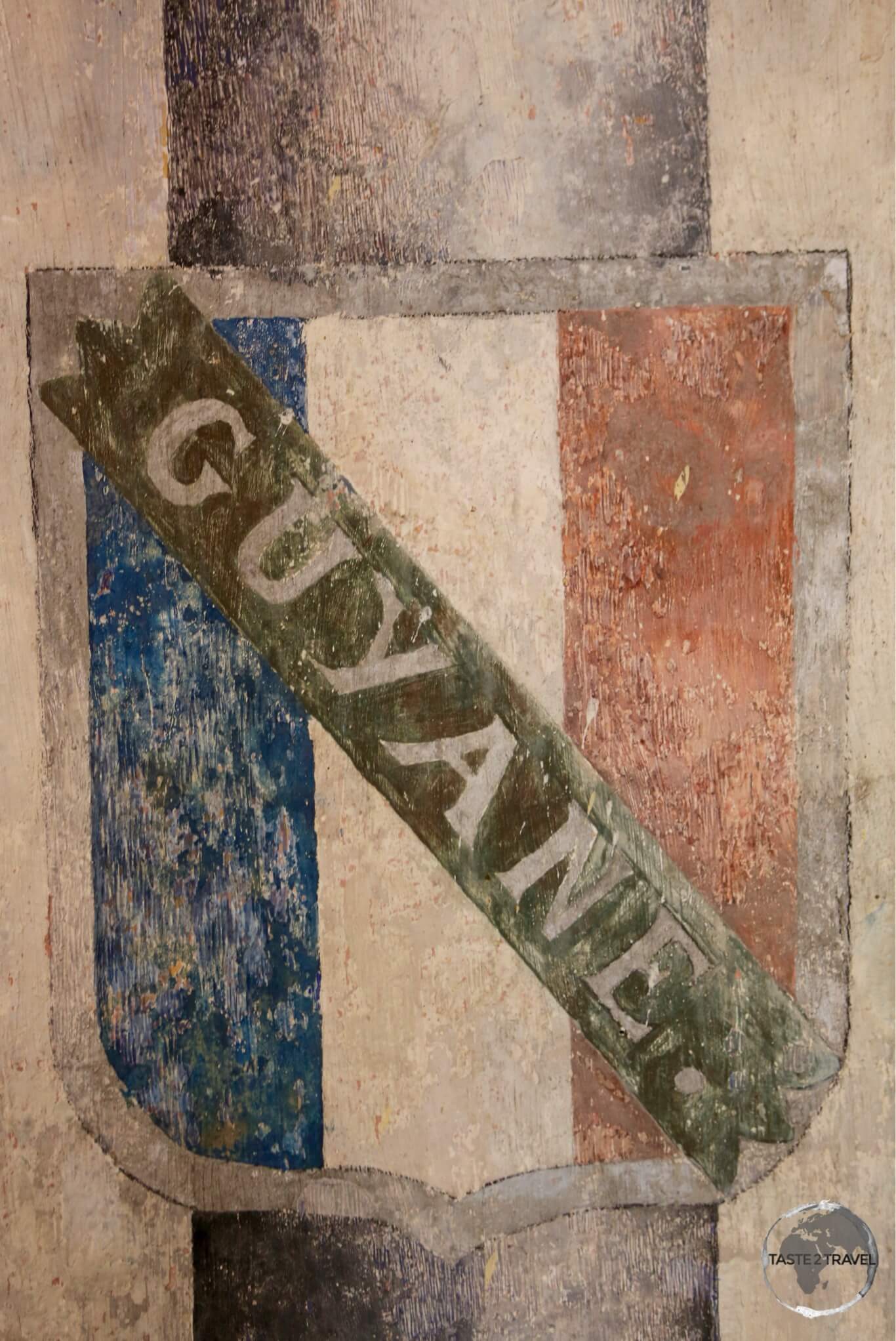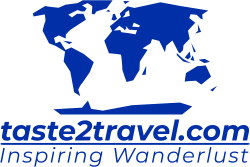French Guiana Travel Guide
Welcome to the taste2travel French Guiana Travel Guide!
Date of Visit: January 2015
Introduction
French Guiana (French: Guyane), is an overseas department and region of France, located on the north Atlantic coast of South America in the Guyanas.
It borders Brazil to the east and south, and Suriname to the west. The country has a population of 250,109 inhabitants, 50% of whom live in the capital Cayenne.
‘Guyana’ is derived from an Amerindian language and means “land of many waters”. As such, this country is not an ideal beach destination as the coastline is lined with huge rivers, which dump brown water into the Atlantic Ocean. If you are looking for blue water you need to head to the Caribbean.
Part of France since 1946, Guiana joined the European Union, and its official currency is the euro. The region is the most prosperous territory in South America with the highest GDP per capita. A large part of Guiana’s economy derives from the presence of the Guiana Space Centre, now the European Space Agency’s primary launch site near the equator.
Sightseeing
Saint Georges
I crossed the Oiapoque river from Brazil to the French Guianese town of Saint Georges. It’s strange to arrive in a town in South America and see the French flag and the European Union flag flying in the main square.
St. Georges is a quiet little transit town, nothing to do here except get your passport stamped and organise onward transport. Upon arrival, I reported to the immigration office where a friendly French gendarme stamped my passport in less than 30 seconds – a very easy entry for me but Brazilians require visas to visit their neighbour. See ‘Getting There‘ below for more details on crossing the border.
After entering the country I went to the bank to withdraw some Euros. I was about to discover that the cost of living in this French territory is very European.
I arrived in St. Georges early in the morning to see the locals walking out of the town boulangeries with freshly back baguettes under their arms – how very French. So different from Brazil where breakfast consists of chocolate cake.
I had to wait for my micro bus to fill with passengers for the 2 hour trip to Cayenne (excellent, fast road) so I took breakfast at a nice cafe on the main square. Everything in this town is a 5 minute walk.
From St. Georges I travelled onto the capital, Cayenne.

The newly-opened Oiapoque bridge connects Brazil and French Guiana.
Cayenne
I arrived in Cayenne overland from Brazil. Upon arrival it was clear I was now in a very different part of the world. The population in the city is manly Creole with some Haitian, Brazilian, European, and Asian added to the mix.
The architecture is very different – lots of colourful wooden houses painted in tropical shades of turquoise, pinks and yellows. The music and most other cultural aspects are Creole influenced. It felt more like the Caribbean than South America.
The city is nice and compact, wonderfully quaint, welcoming and relaxing. In one day you can visit most sights on foot. In a city of 56,000 people, traffic is never heavy.
If you are in Cayenne during Carnival (January – March) you should ensure you catch the Sunday parade.

Located in downtown Cayenne, Place du Coq is named after the rooster which sits atop a column in the middle of the square.
Cayenne Pepper

A Cayenne Pepper Plant. Image: Franz Eugen Köhler, Köhler’s Medizinal-Pflanzen
What is Cayenne pepper? For all the facts you can refer to this site.
Despite the pepper being named after Cayenne, most peppers are now grown elsewhere in the world. There are no specific purveyors of Cayenne pepper in Cayenne.
From Cayenne I travelled along the coast to Kourou – home of the Guiana Space Centre and jumping off point for trips to Îles du Salut.
Kourou

The Guiana Space Centre at Kourou.
The Centre Spatial Guyanais (CSG) is a French and European spaceport near Kourou. The location for the space centre was chosen because it fulfils the two major geographical requirements of such a site:
- it is quite close to the equator, so that the spinning earth can impart some extra velocity to the rockets for free when launched eastward, and
- it has uninhabited territory (in this case, open sea) to the east, so that lower stages of rockets and debris from launch failures cannot fall on human habitations.

This Ariane rocket can carry a payload of 10t into space – enough to lift my car (foreground) into orbit.
You can visit the Space centre on a guided visit (well worth it). The visits are popular and spaces are limited so it’s best to book ahead in advance. You can do so by contacting CSG.

Inside the launch control centre at the Kourou Space Centre.
Îles du Salut

Entrance to prison cells on Îles du Salut.
The Îles du Salut (in English: Islands of Salvation, so called because the missionaries went there to escape plague on the mainland) are a group of small islands about 11 km off the coast near Kourou.

Squirrel Monkey on Îles du Salut.
The islands were part of a notorious penal colony from 1852 onward for only the worst criminals of France. The islands were featured in the novel Papillon, by Henri Charrière. He was imprisoned here for 9 years.
The prison was shut down in 1953. Today the islands are a popular tourist destination and are full of wildlife.
You can reach the islands by catamaran from Kourou. You need to reserve and pay in advance. I visited with Tropic Alizés, who I would recommend.

Capuchin monkey on Îles du Salut.
Mana
This tiny town north of Saint-Laurent-du-Maroni is home to a remarkable restaurant – Le Buffalo.
If you’re in this part of the country it is worth the detour to eat here. The restaurant itself is housed in a simple wooden building with an equally simple interior. It is located on a quiet side street in this sleepy town (population: 800).
However the chef is a properly trained French chef who has relocated to Mana and brought his culinary skills with him. During your meal he will appear in the restaurant in his white chef’s uniform (including the ‘toque’ – traditional chef’s hat) to ensure everyone is enjoying their meals.
I especially recommend the carpaccio of buffalo.
Local ex-pats drive here from more distant towns for weekend lunches.
Tel: 594344280
Address: 36 Rue Javouhey, Mana 97360, French Guiana
The beaches near to Mana are nesting sites for the huge leather-back turtles.
From Mana I made the short journey south to Saint-Laurent-du-Maroni, my exit point from French Guiana.
Saint-Laurent-du-Maroni
With 40,000 inhabitants this is the 2nd largest town in French Guiana and the border crossing to Suriname.
The town was founded in 1858, it was formerly the arrival point for prisoners, who arrived at the Camp de la Transportation, the buildings of which have been restored and can be visited.
The town is small and compact and easily seen in half a day.
Entering Suriname from here is very easy – see the ‘Getting There‘ section below.

Camp de la Transportation in Saint Laurent du Maroni.
Accommodation
Hotels are in short supply in Cayenne (and elsewhere in the territory). It’s always best to book in advance using an online agent such as booking.com
In Cayenne, I stayed downtown at Hotel Le Dronmi, which I would recommend. The hotel is conveniently located to everything of interest.
Eating Out
This is a former French colony – need I say more. Lots of good food available throughout the territory.
Visa Requirements
Some nationalities require visas for French Guiana – check your requirements prior to arrival.
Getting There
By plane
French Guiana’s main international airport is Cayenne – Félix Eboué Airport, located south of the city centre.
The following airlines provide flights to/ from Cayenne:
Air Caraïbes – flies to/ from Fort-de-France, Paris-Orly, Pointe-à-Pitre
Air France – flies to/ from Fort-de-France, Paris-Orly, Pointe-à-Pitre, Miami
Air Guyane – flies to/ from Grand Santi, Maripasoula, Paramaribo, Saint-Laurent du Maroni, Saül
Azul Brazilian Airlines – flies to/ from Belém, Fortaleza
Surinam Airways – flies to/ from Belém, Paramaribo
There are no bus services to the airport and of course the local taxi’s take full advantage of this by charging a flat fare of €35 to downtown Cayenne.
By Road/ River
To/ From Suriname
Crossing the river Maroni between French Guiana (Saint-Laurent-du-Maroni) and Suriname (Albina) is very easy and straight-forward.
The Immigration posts for each country are located on opposite banks of the river. There are many private pirogues who will ferry you across the river.
Once you cross you have taxis and shared transport that can get you to Paramaribo (2 hours) or to Cayenne (3 and a half hours). Roads on both sides are in excellent condition.
Some nationalities require visas for Suriname (e.g. Australian) – check your visa requirements prior to arrival.
To/ From Brazil
Update: since this was written the long-unused suspension bridge between St George d’Oiapok (French Guiana) and Oiapoque (Brazil) is now operational.
There are nightly buses from Macapa to the border town of Oiapoque. The road is mostly paved and the trip takes about 10 hours. I arrived at the small bus station in Oiapoque at 5 am and was informed I would need to wait until 8 am for the Brazilian immigration office to open. I joined my fellow transit passengers and slept in the bus station where there were some comfortable wooden benches to stretch out on.
At 8 am I took a taxi to the immigration office to get my exit stamp then down to the port for the crossing by pirogue to St. Georges.
From the river you can see the huge new bridge, which links French Guiana with Brazil. This was completed in 2011 at a cost of $33 million but still remains unopened. The French are waiting for the Brazilians who have promised to have all infrastructure in place and the bridge open in time for the Rio Olympics in 2016.
Once you reach the dock in St. Georges you will be greeted by micro bus drivers who can transport you to Cayenne. You will first need to get your passport stamped at the Gendarmerie (Police Station), which is inconveniently located on the outskirts of town (a 15 minute walk).
Some nationalities require visas for Brazil (e.g. Australian) – check your visa requirements prior to arrival.
Getting Around
Public transport is sporadic throughout the country. The best option, allowing you to maximise your time, is to hire a car. I did a one-way rental from Cayenne to Saint-Laurent-du-Maroni.
Safe Travels!
Darren
Follow me on Instagram:
[instagram-feed feed=1]
Further Reading
Other travel reports from the region include:
- Amazon River Journey
- French Guiana (Cayenne Carnival)
- Guyana
- Guyana (Essequibo Region)
- Macapa to Manaus via the Guianas
- Panama Bird Watching
- Panama Travel Report
- Suriname
French Guiana Travel Guide French Guiana Travel Guide French Guiana Travel Guide French Guiana Travel Guide French Guiana Travel Guide
Author: Darren McLean
Darren McLean is an Australian, full-time, digital nomad who has spent 37 years on a slow meander around the globe, visiting all seven continents, 192/ 193 UN countries and 245/ 251 UN+ countries and territories.
He founded taste2travel to pique one’s curiosity and inspire wanderlust.







looking good, Darren! keep up the good work 🙂
Thanks Sonia ?
Nice pictures! Keep going working like this…:)
Thanks Ayleen ?